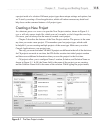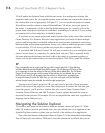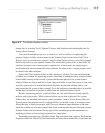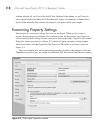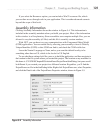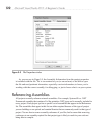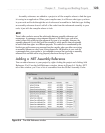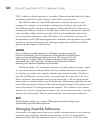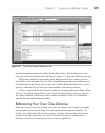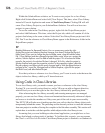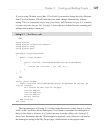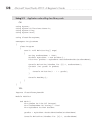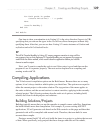
Chapter 5: Creating and Building Projects 123
Assembly references are added to a project to tell the compiler where to find the types
it is using in an application. When your compiler runs, it will know what types you have
in your code and looks through the set of referenced assemblies to find that type. Adding
an assembly reference doesn’t add all of the code from the referenced assembly to your
code; it just tells the compiler where to look.
NOTE
There is often confusion around the relationship between assembly references and
namespaces. A namespace using statement (Imports in VB) allows your code to be
written without fully qualifying type references for types in an assembly. However
, the
assembly reference is just a way to tell the compiler in which specific external assembly
to look to find those types: two different purposes. This confusion is exacerbated by the
fact that you get the same error message from the compiler when you either are missing
an assembly reference or don’t have a using (Imports for VB) directive in your code for
a namespace that a type resides in. Just remember to ensure that you have an assembly
reference first and then add a using (Imports) directive at the top of your file.
Adding a .NET Assembly Reference
You can add references to your project by right-clicking the project and clicking Add
Reference. You’ll see the Add Reference window, shown in Figure 5-6. On the .NET
tab of this window, you’ll see a list of assemblies from the Global Assembly Cache
Figure 5-6 The Add Reference window



